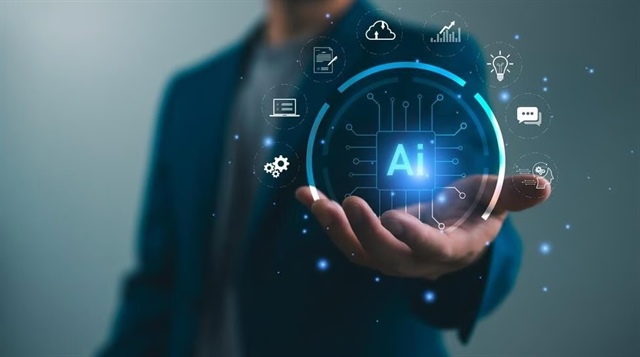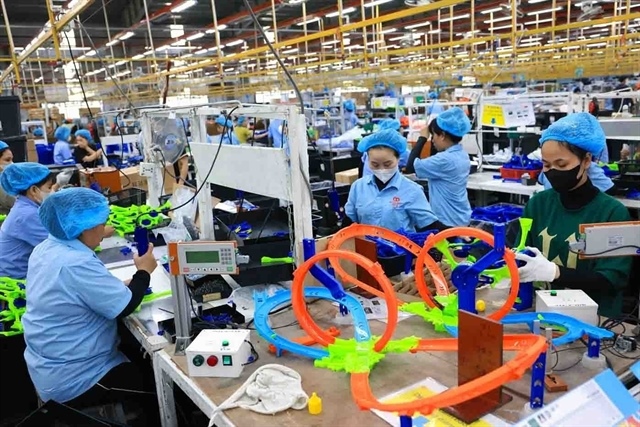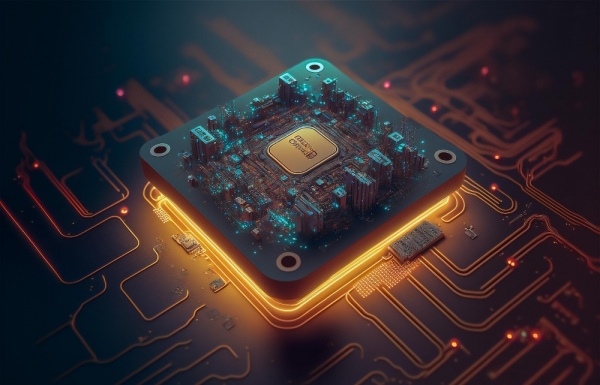Vietnamese enterprises race towards AI adoption
Vietnamese enterprises race towards AI adoption
Vietnamese enterprises are increasingly adopting AI to boost efficiency and competitiveness, but they remain mindful of the technology's potential risks.

Photo: Shutterstock |
While Vietnam is rapidly emerging as an AI-ready economy with strong digital ambition, industry leaders caution that successful adoption depends less on new technologies and more on the capability to govern, operate, and integrate them.
At the Vietnam Future Economy Summit by Bloomberg Businessweek Vietnam on November 14, experts stressed that AI must be applied with measurable value and strategic purpose – or risk becoming a costly and ineffective investment.
Ha Trung Kien, vice chairman of G-Group Technology Corporation, said, “Our company's approach to AI is based on practicality. Instead of following trends, we apply AI to very specific problems, from cybersecurity to AI-enabled cameras to enterprise operational systems.”
Kien emphasised that AI only truly creates value when value can be measured. Some critical questions for AI adoption include whether employee productivity has improved, whether costs have decreased, whether efficiency has increased, and whether the company's competitiveness in the market has improved.
Additionally, implementing new technology inevitably reshapes how organisations operate. Among them, people play the critical role in the success of AI implementation.
"I believe that successfully deploying AI in a real business requires strong commitment from top leadership. Despite being a tech company, we have to invite external experts to conduct case studies so everyone can clearly see the value and understand how AI works in practice," Kien said.
When implementing AI for other businesses, he pointed out one issue. Even with a determined leader, the real bottleneck lies in the mindset around governance and employees' ability to modify their daily work habits. Departments may clash, and eventually, people may start to think, “This does not work.”
In the coming years, AI will be a critical technological driver, improving efficiency and fundamentally changing how we approach, deliver, and apply services across business and everyday life. Against the backdrop, more than 60 per cent of organisations in Vietnam show a relatively high level of AI readiness, surpassing the global average, according to the Cisco AI Readiness Index.
These figures somewhat reflect the reality of the Vietnamese market. Vietnam currently has over 4,000 startups and nearly 1.5 million young engineers. The pace of digital transformation is speeding up, while adaptability to new technologies is strong.
Nguyen Le Thanh, executive chairperson of Verichains, said, "Vietnamese businesses have a strong desire to transform and use AI and technology. However, the greatest challenge does not lie in new technologies, but rather in operations, applications, and the readiness of legacy systems."
“The core issue lies in the process of operating and applying the technology,” Thanh noted. “Readiness is not only about having the budget and the willingness to invest, but also about whether our systems are ready to connect, whether our data is sufficient, and whether data is prepared for AI to solve problems effectively.”
A quick survey of delegates at the summit revealed the risks of AI deployment. 54 per cent of respondents selected lack of AI and model governance capabilities as the biggest issue. This was followed by model bias and inaccuracies and data leakage. Only 10 per cent chose insufficiently skilled personnel.
Thanh said, "AI can be powerful, but some problems – even when solved by AI – may not be cost-effective. Therefore, AI should play a decisive role in guiding an enterprise's strategic decisions on where to invest and how to apply AI technologies to solve specific problems in a way that aligns with long-term business direction."
"More importantly, AI must be the one to play the role of controlling the system, ensuring accuracy, limiting the risk of data exposure and damage, and limiting model errors that have consequences. Finally, when there is an incident, AI is the one to solve it, the one to respond and handle those incidents, and take responsibility for those problems," he said.
- 13:49 19/11/2025



























